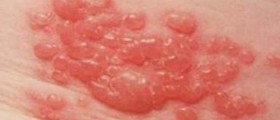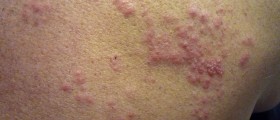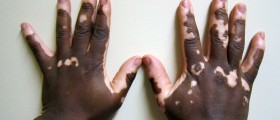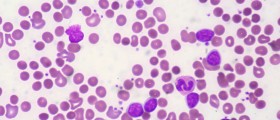
Skin is a soft outer covering of the body and the largest organ of the human system made of a number of different layers. Skin is very important and serves as the body’s first line defense against pathogens and excessive water loss. However, there are many conditions affecting the human organ system, as well as the surface of the body. Here is a quick review of some of the most common skin diseases.
Acne
Acne, or pimples, is one of the most commonly reported skin problems. This is actually a disease affecting the hair follicles of the skin. The disease occurs when the sebaceous oil glands, which are normally attached to the hair follicles, start producing excessive oil. The follicular openings become clogged producing a bump and inflammation. The disease most commonly affects teenagers since the elevated levels of male hormones stimulate the production of oil by sebaceous glands.
Eczema
This is a form of dermatitis described as an inflammation of the outer layer of the skin. This very common skin disease commonly manifests in dryness of the skin, rashes, redness, swelling, itching and dryness.
Herpes Zoster
This condition is commonly known as shingles. It is a viral disease characterized by painful skin rash and blisters usually affecting one side of the body. Varicella zoster virus that normally results in child’s disease chickenpox causes the disease. When the chickenpox episode has resolved, the virus stays in the body. In some people, it causes shingles many years after the initial infection.
Herpes Simplex
This condition is also known as cold sores or fever blisters. It usually affects the skin on the face and around the mouth causing visible and painful blisters. This disease is very common since it is easily transmitted in a direct contact with infected individual. There is no cure for this disease and once infected, virus remains in the body causing periodic relapse episodes.
Psoriasis
This autoimmune disease affects the skin. Psoriasis speeds up the growth of new skin cells. Scaly patches on the first layer of the skin characterize this disease. Many treatments are available but the disease is typically recurrent.
Vitiligo
Vitiligo is another chronic disorder characterized by depigmentation of the patches on the skin. The disease occurs when the cells responsible for pigmentation die or become defected so that their function cannot be accomplished. This is probably an autoimmune or genetic disease. It is very rare and affects less than 1 percent of world population. Vitiligo is typically recognizable by depigmentation of patches on skin on the extremities.

















Your thoughts on this
Loading...